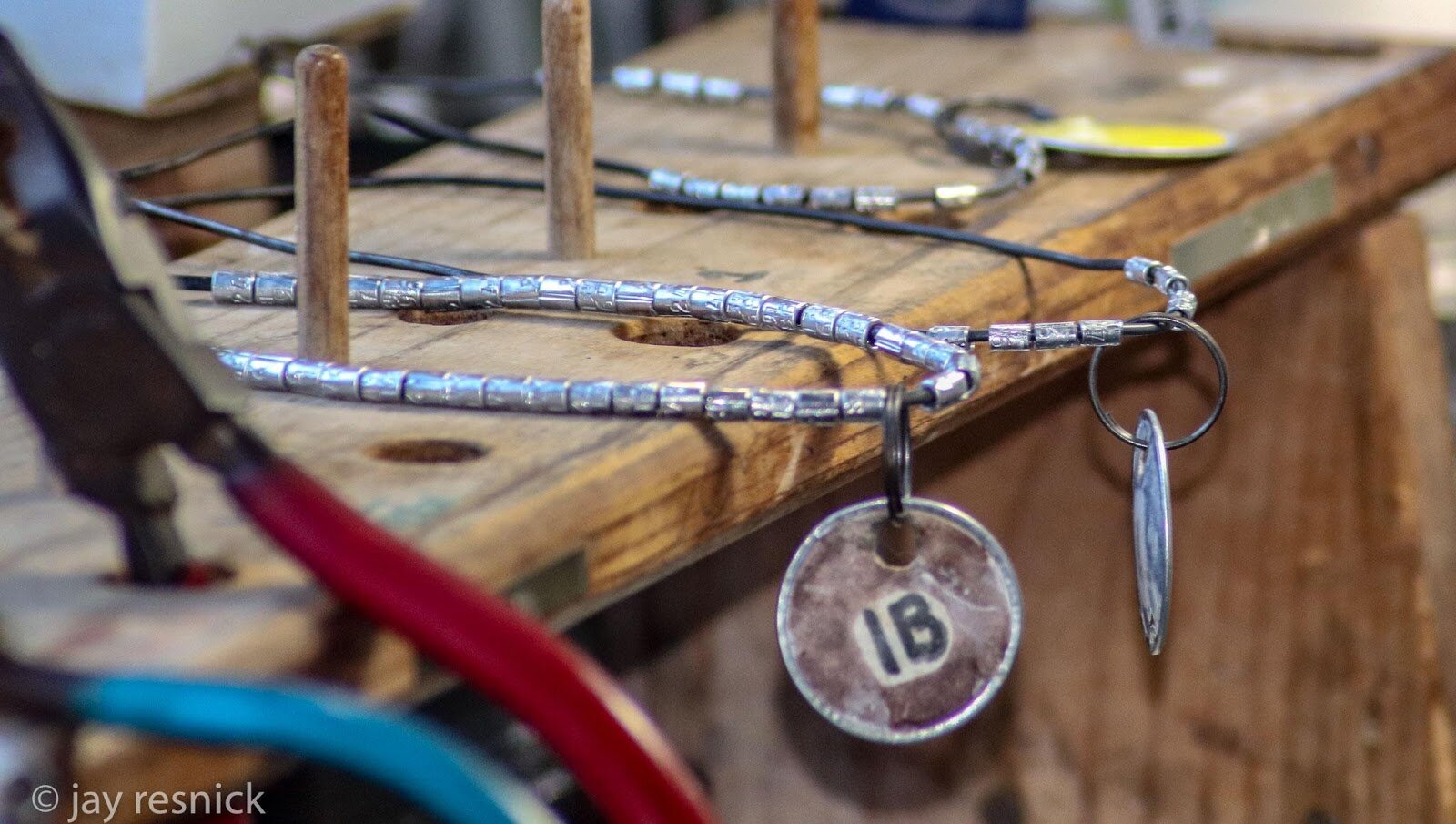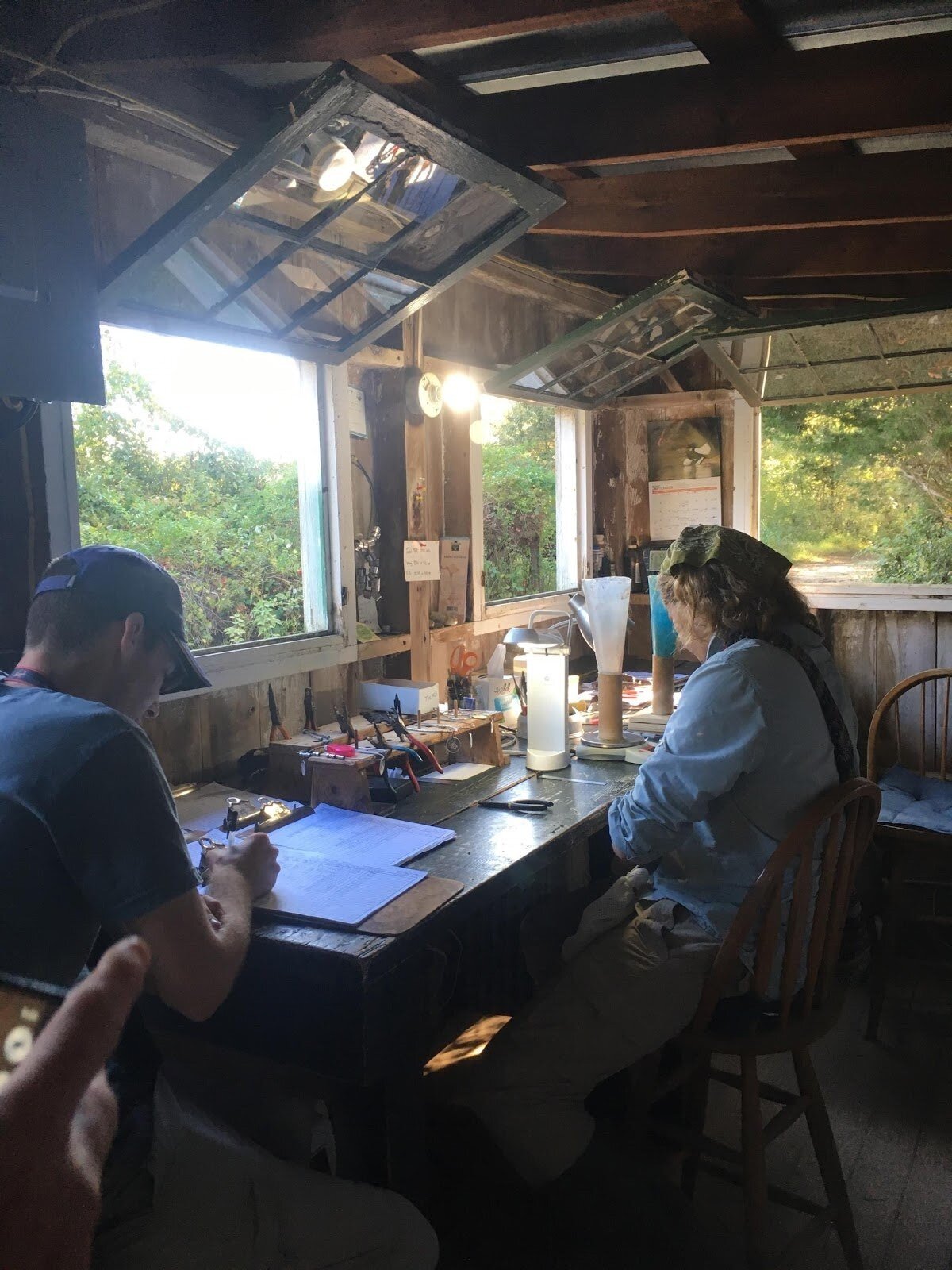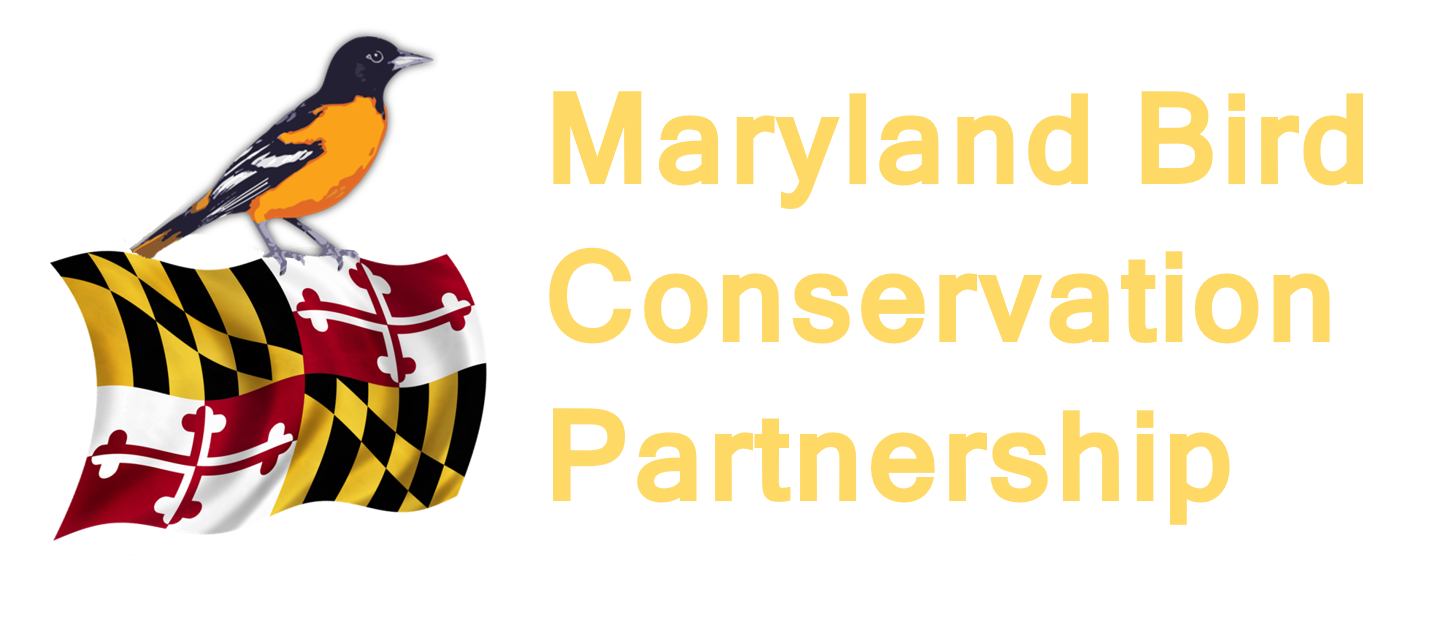Maren Gimpel holds a Yellow-billed Cuckoo
I never thought of birding as an aerobic activity. As a matter of fact, getting exercise and birding are diametrically opposed. Ask anyone. When I arrived at Washington College’s Foreman’s Branch Bird Observatory outside of Chestertown the mist nets had been open since an hour before sunrise. Members of the Anne Arundel Bird Club had been invited to join Maren and her team – if they could keep up!
The nets are open 5 hours a day, 7 days a week from March through May, and August through November. In a Fall migration more than 10,000 birds have been banded in the 4-month period, and in 2019 the 275,000th bird was banded!
Foreman’s Branch Bird Observatory is a part of the 5,000-acre River and Field Campus at Washington College. With that in mind it takes a brisk pace to retrieve the birds from the nets scattered throughout this expansive campus and deliver them to the banding lab for processing. Species variety found on site is increased due to the range of stopover habitats which include mature and secondary forests, mud flats, fallow fields and hedgerows.
Banding charts have been kept since 1999 and are available for viewing. Research focuses on migration: both population levels and timing, as well as productivity of local breeding bird species. Maren, a Maryland native, is a field ecologist and avian biologist who has co-authored more than 10 species-specific studies during her time at Foreman’s Branch. She is the Outreach Coordinator for the Field and River Campus.


The banders measure age, sex, weight, wing length, cloacal protuberance (aka testes) and the all-important fat. Birds only carry fat, which is a yellow-orange color, if they are ready to migrate.
Foreman’s Branch Bird Observatory, which has its own MOTUS tower, is a control station for a 3-year study on eight target species. The research is focused on how birds are actually recovering from building strikes and is being carried out in conjunction with Powdermill Nature Reserve and Pittsburgh Bird Strike Rescue. Bird species that have been brought to a rehab facility post building strike are radio tagged and released. The same healthy species are radio tagged and released from Foreman’s Branch.
Using data obtained from MOTUS as well as recapture data, a comparison of survivorship of recaptured birds will allow scientists to more fully understand the long term viability of birds that have suffered an impact injury.
Another significant project at the River and Field Campus is the restoration of a critical 228-acre grassland habitat which has led to the return of many grassland birds to the area. Avian research has focused on the Grasshopper Sparrow as an indicator species for breeding reestablishment.
I unfortunately had to leave before the last mist net sprint and I missed the opportunity to see the Cooper’s Hawk in hand:
Foreman's Branch Bird Observatory founder and director Jim Gruber holds a Cooper’s Hawk.
Check out Foreman’s Branch Bird Observatory on Facebook and Instagram.
Thanks to Jay Resnick from Anne Arundel Bird Club for the gorgeous photos!



